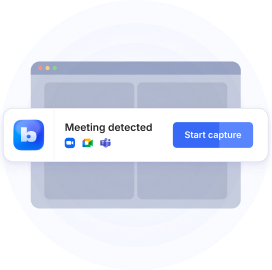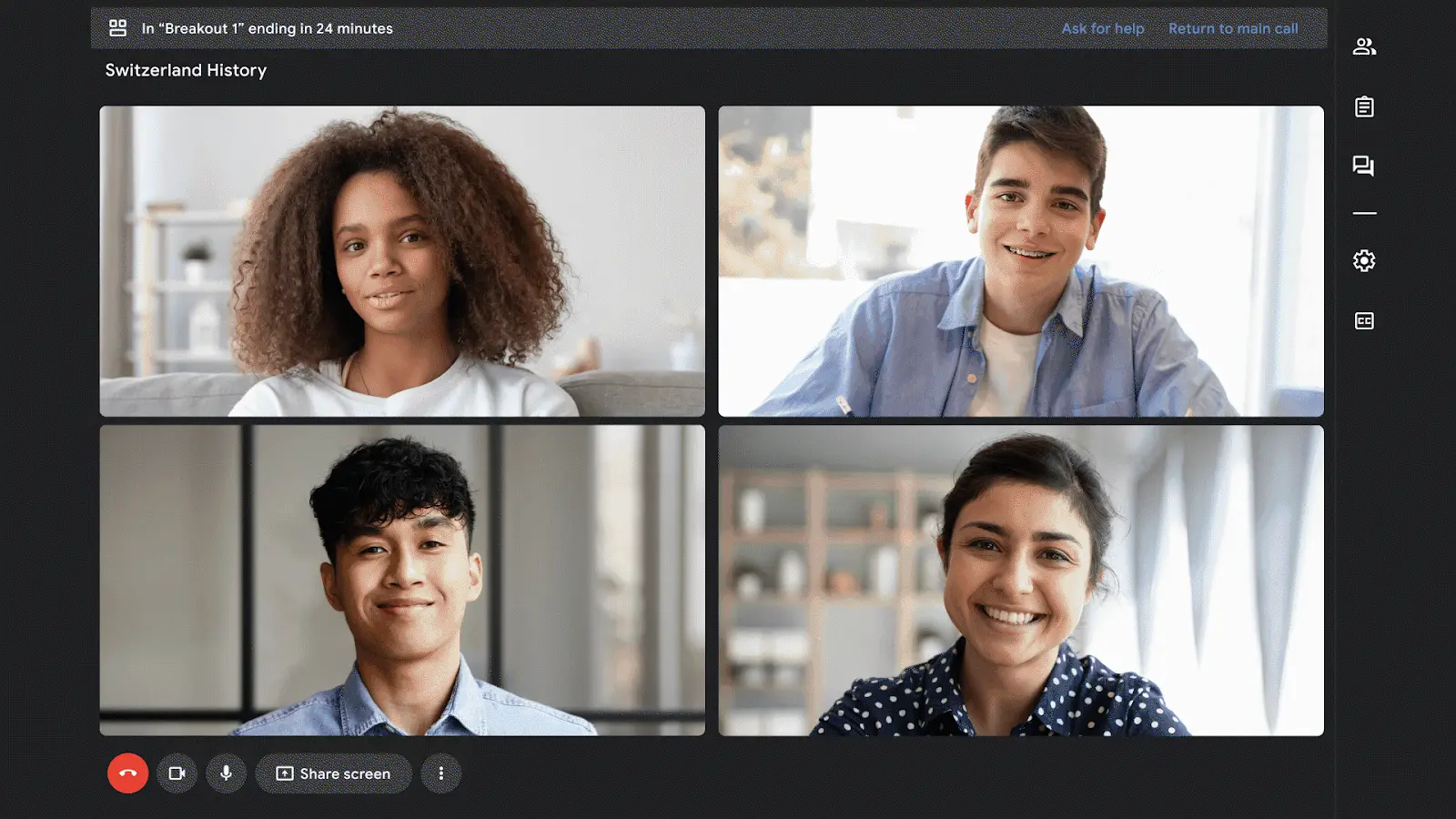
Google Meet has skyrocketed as a top pick for remote video conferencing, giving us a seamless platform for virtual collaboration.
One feature that definitely stands out is the Google Meets presentation tool, empowering users to effortlessly share their screens with their team. Whether it's documents, slides, or videos, this feature streamlines workflows and promotes collaboration within your company.
In this article, we'll guide you through the process of how to present on Google Meet in 2025, from the very basics to advanced tips.
How To Present Screens In Google Meet in 2025
There are many ways to preset your screen, and not just on a desktop. You have the option of sharing your screen on your phone as well. Let's dive into the main ways to present and share your screen in Google Meet.
On Computer
There are three different ways to share your screen on your desktop with Google Meet. Each one of these methods will yield a different outcome, depending on which way you would like your presentation to go.
Share Entire Screen
1. Click on the "Present now" button at the bottom of your meeting screen

2. Select "Your entire screen" from the options presented
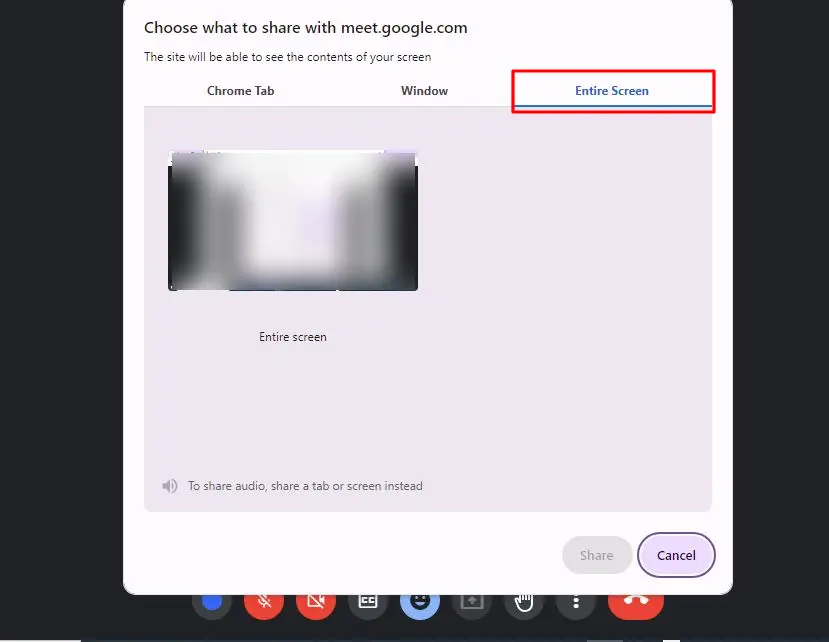
3. Choose the specific screen you wish to share if you have multiple monitors.
4. Click "Share" to begin presenting your entire screen to participants.

5. Click "stop presenting" when you wish to end your presentation.
Share A Window
Among the many options available, the "Share A Window" feature allows you to focus on one specific tab or application window when sharing your screen. This approach ensures that only the relevant tabs are shared in your meeting.
1. Click on the "Present now" button and select "A window" from the options.

2. Choose the specific window or application you want to share.
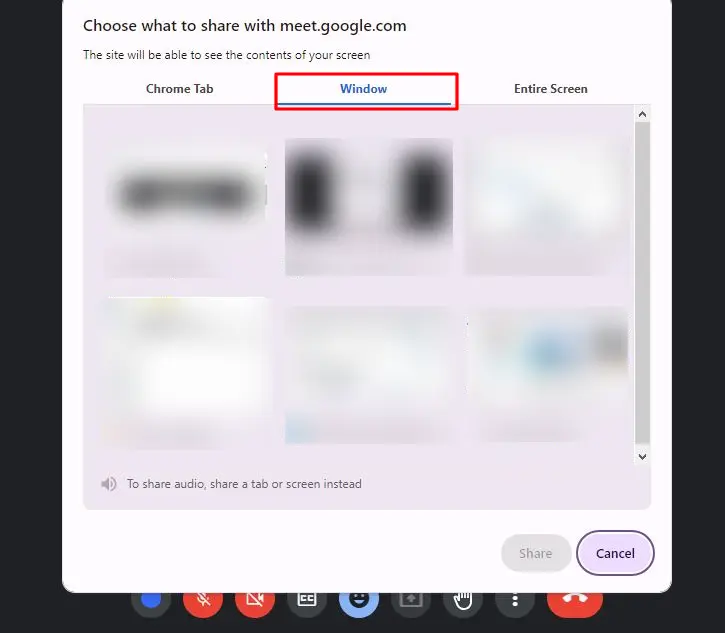
3. Click "Share" to start presenting the selected window to participants.
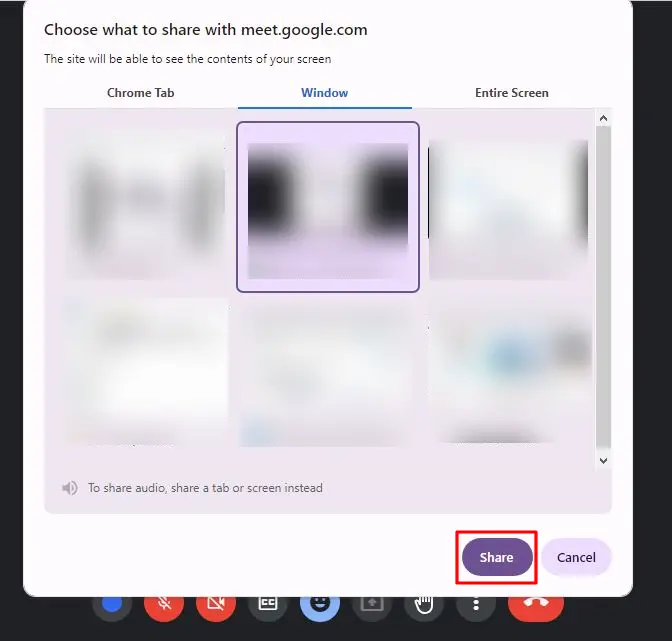
4. Click on "stop presenting" when your presentation is done.
Share A Tab
This feature allows you to present a single browser tab without revealing everything on your screen. However, this option is only available for the Chrome browser.
1. Click "Present now" and select "A Chrome tab"

2. Choose the tab you want to share from the list of open tabs.
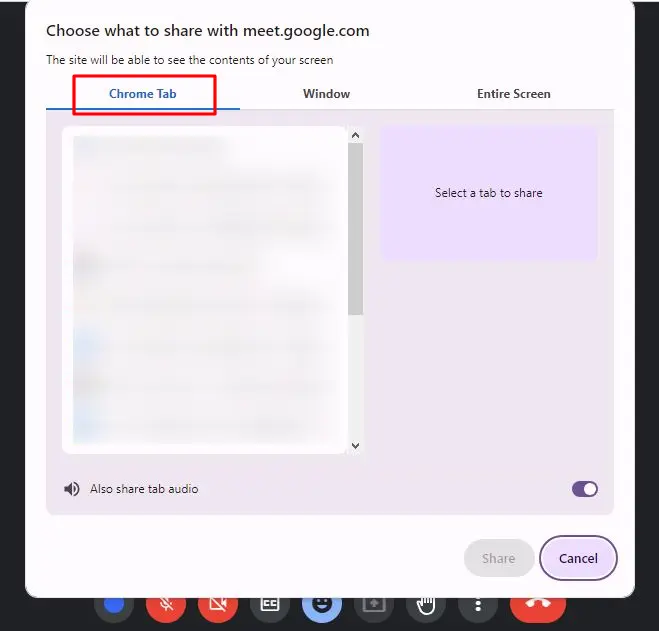
3. Click "Share" to start presenting the selected tab to participants.
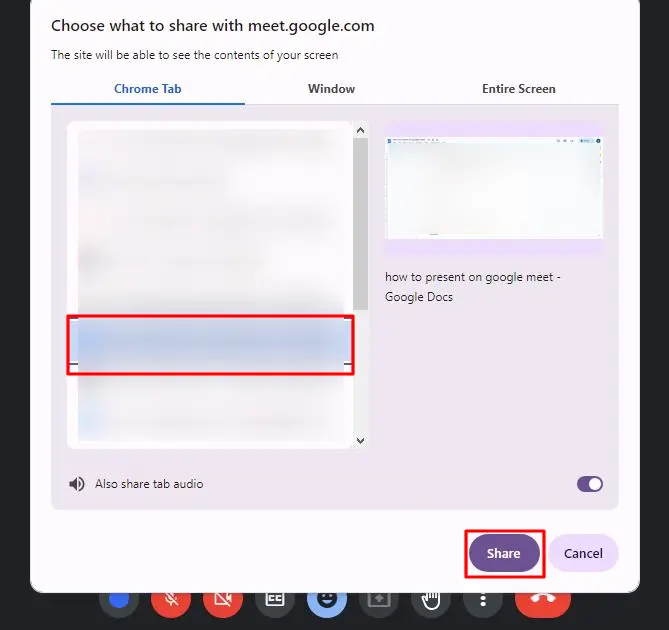
4. Click on "stop presenting" when you're presentation is complete.
(Optional) Using the Google Meet gridView extension
1. Install the Google Meet Grid View extension from the Chrome Web Store
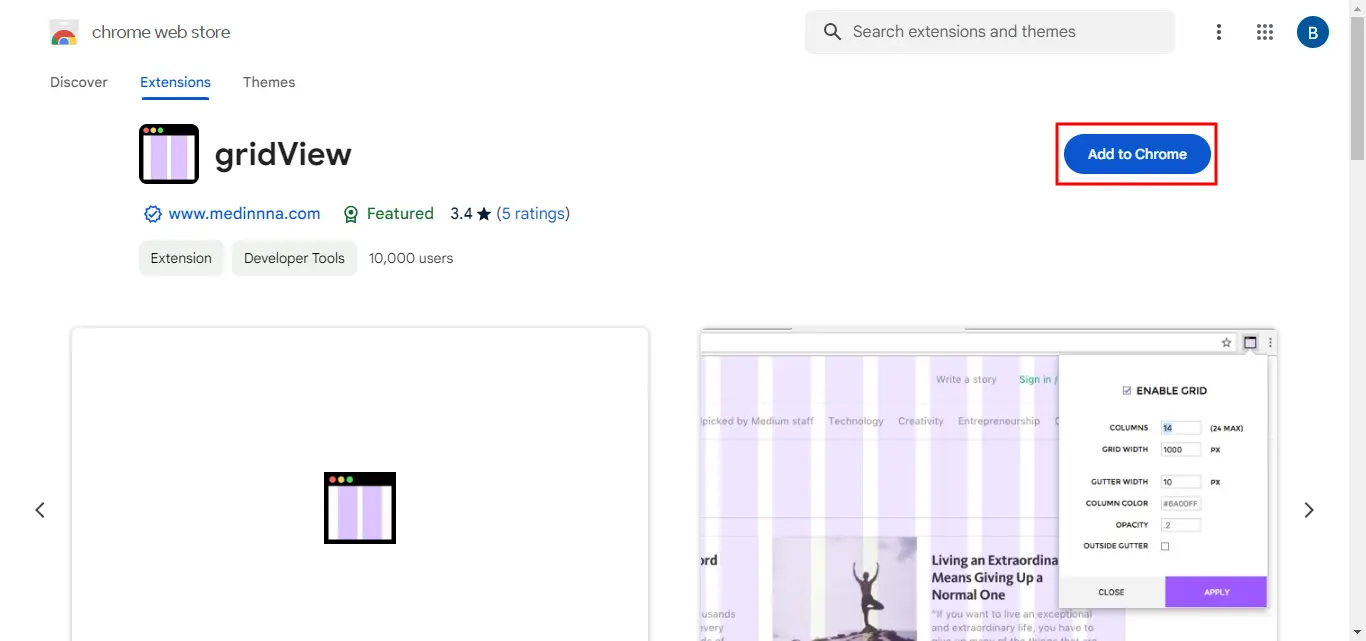
2. During the meeting, click on the Grid View extension icon

3. Choose the screen or application you want to present.
4. Click "Share" to begin presenting through the GridView extension.
On Mobile
Let's explore how to present screens on Google Meet using mobile devices, for both Android and iOS. It might seem daunting at first, but we've got you covered.
Android
1. Within a Google Meet session, tap the three-dot icon

2. Select "Share screen" from the options provided
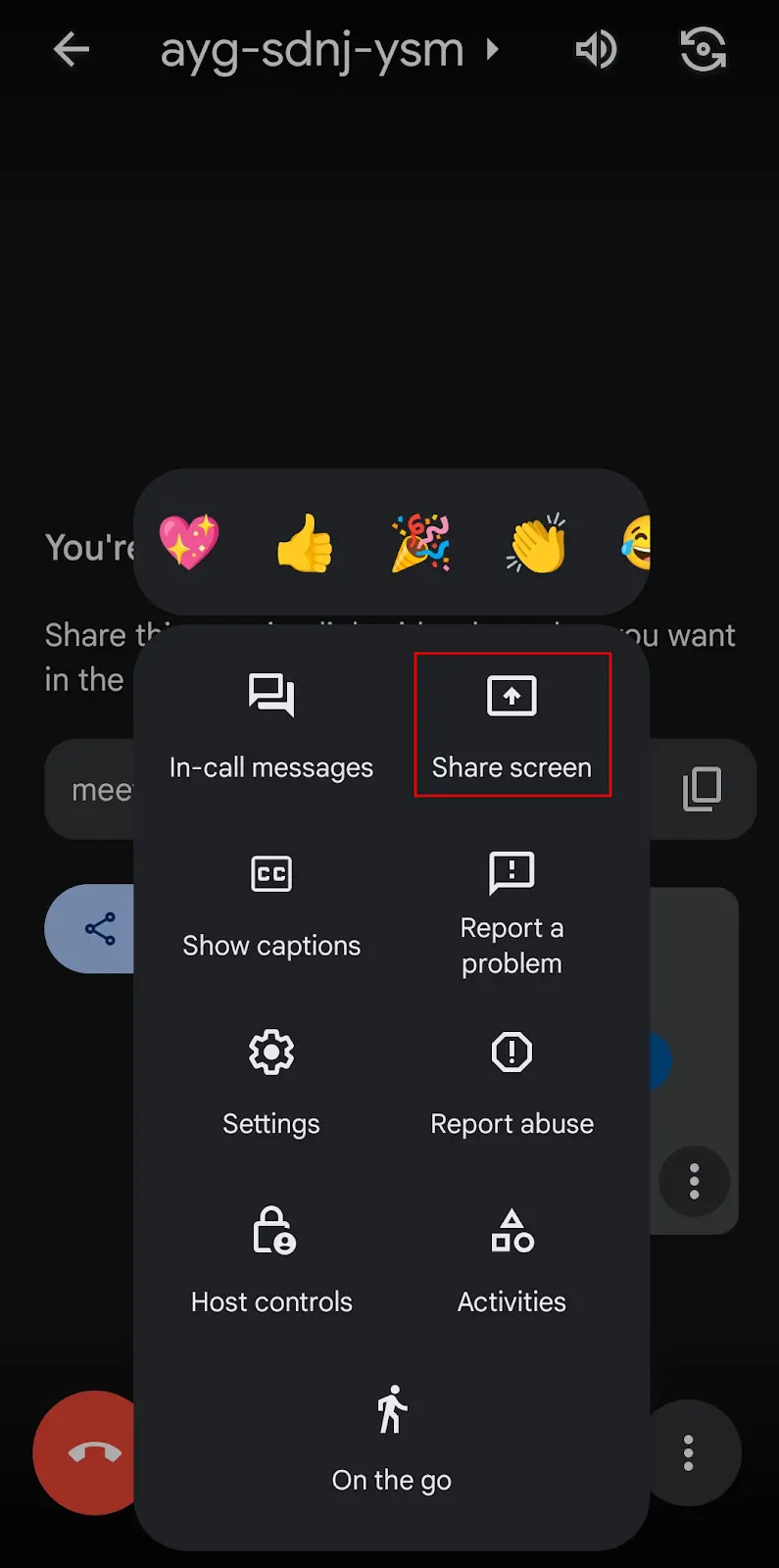
3. Confirm the screen-sharing request. Note that Google Meet on mobile devices can only share your screen. Proceed by tapping "start sharing" or "continue"
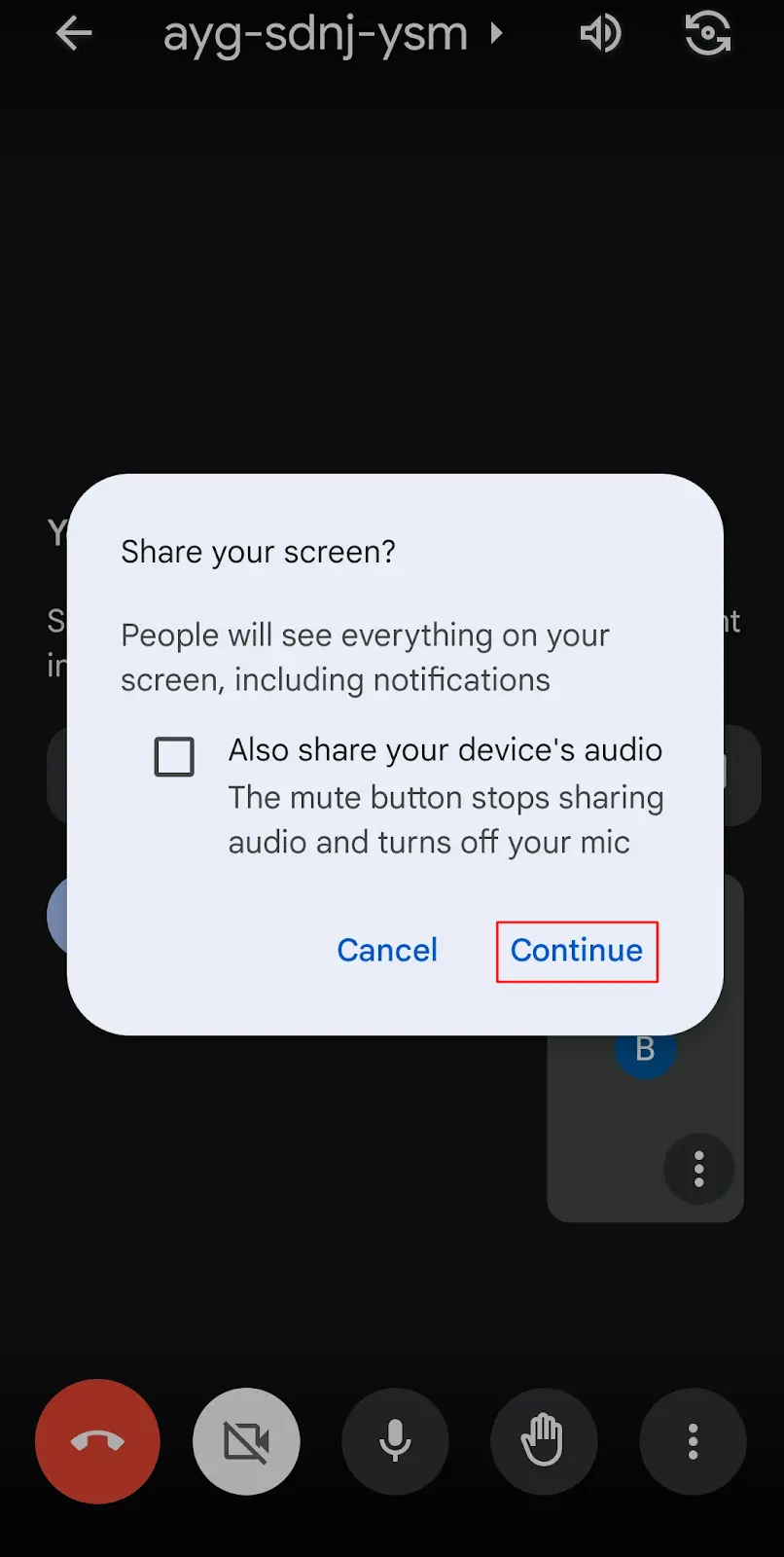
4. To end the screen sharing, tap "Stop sharing"

Pro tip: Enable Do Not Disturb mode to prevent any notifications that pop up.
iOS
1. While in a meeting, tap the three-dot icon
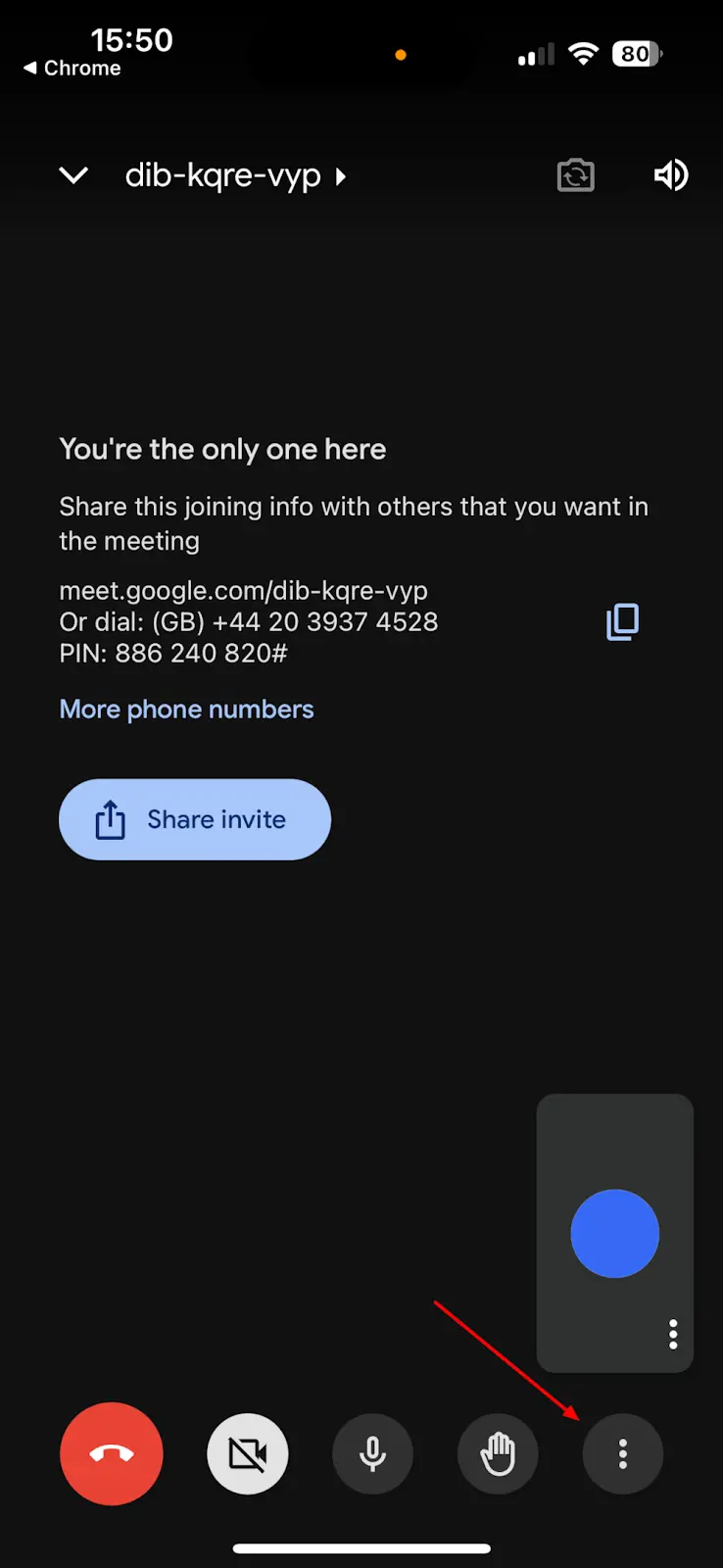
2. Tap "Share screen"
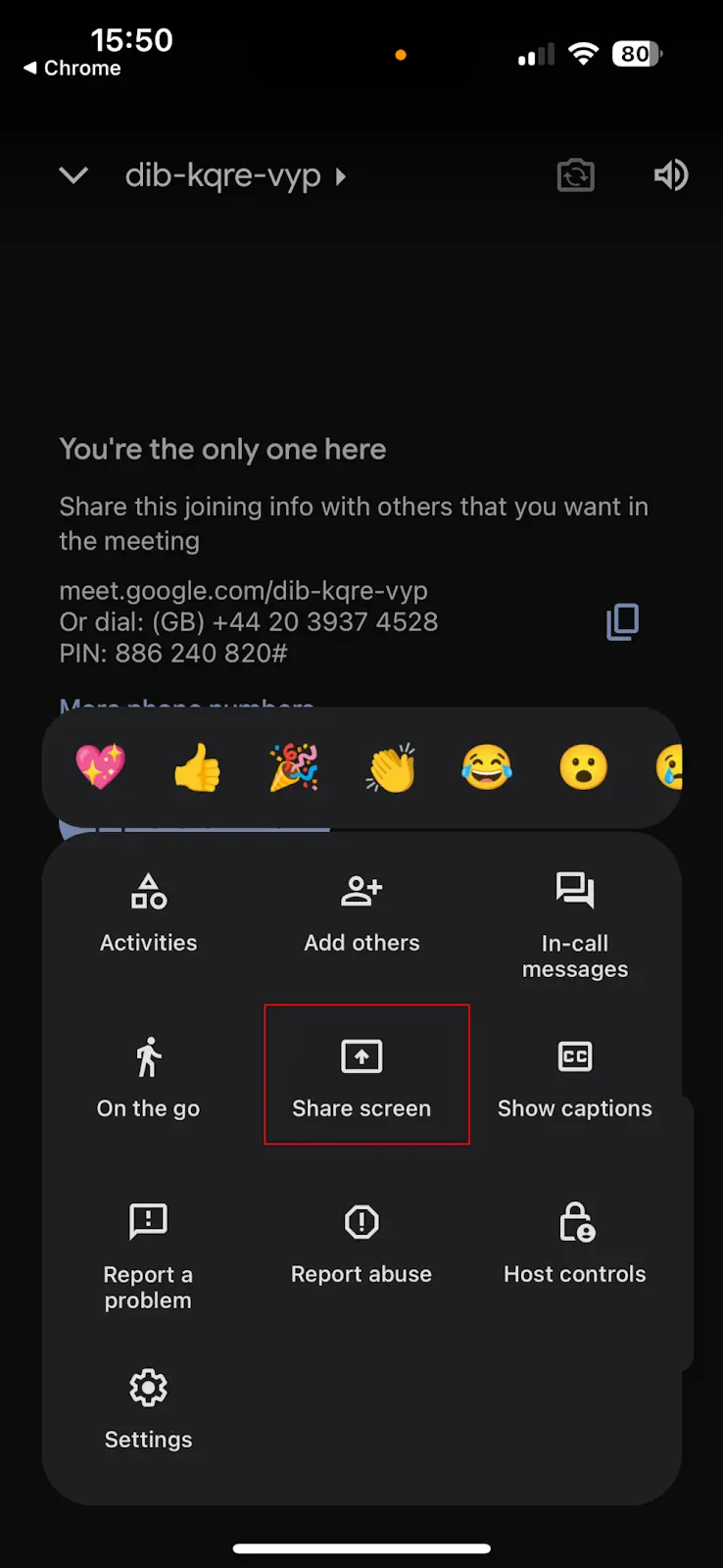
3. Then choose "Continue"
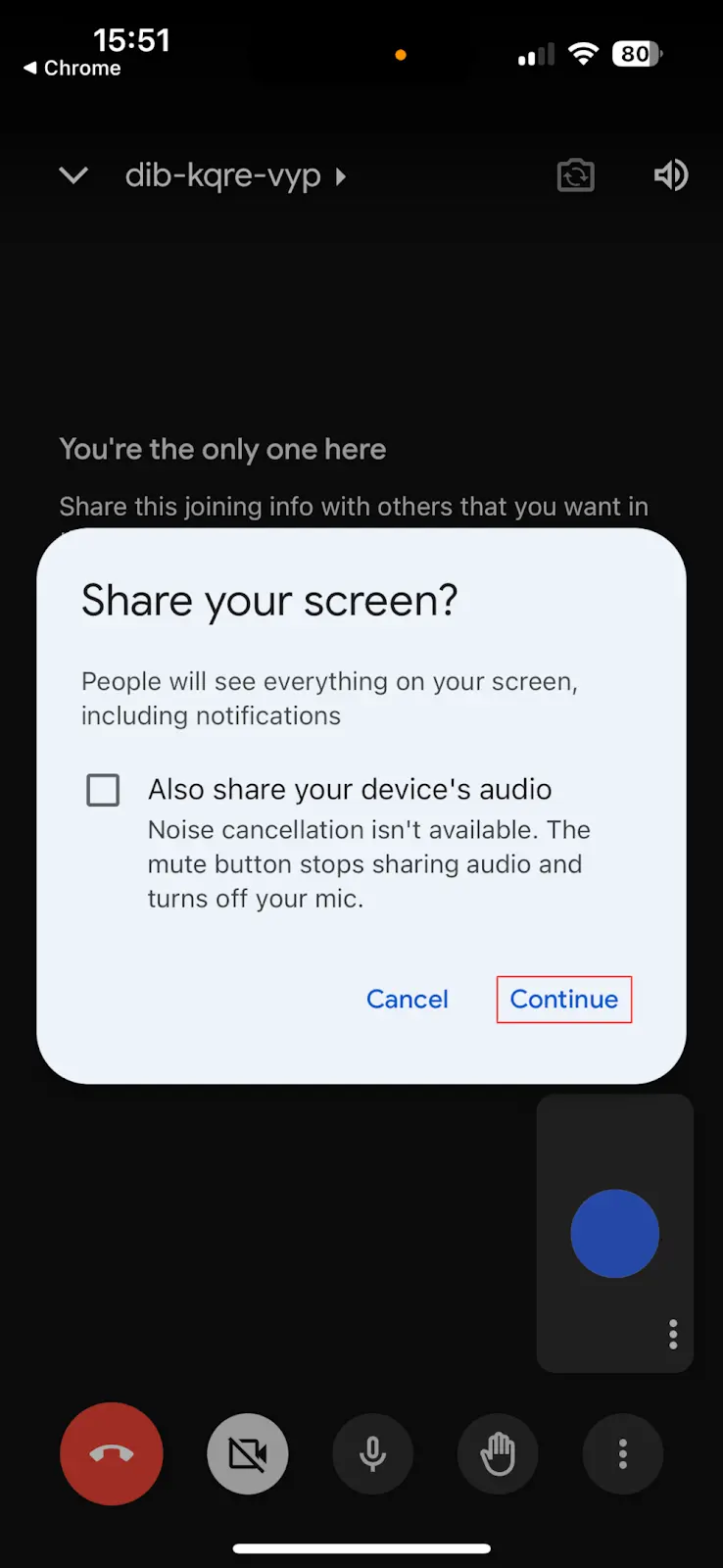
4. Click on "Start broadcast"
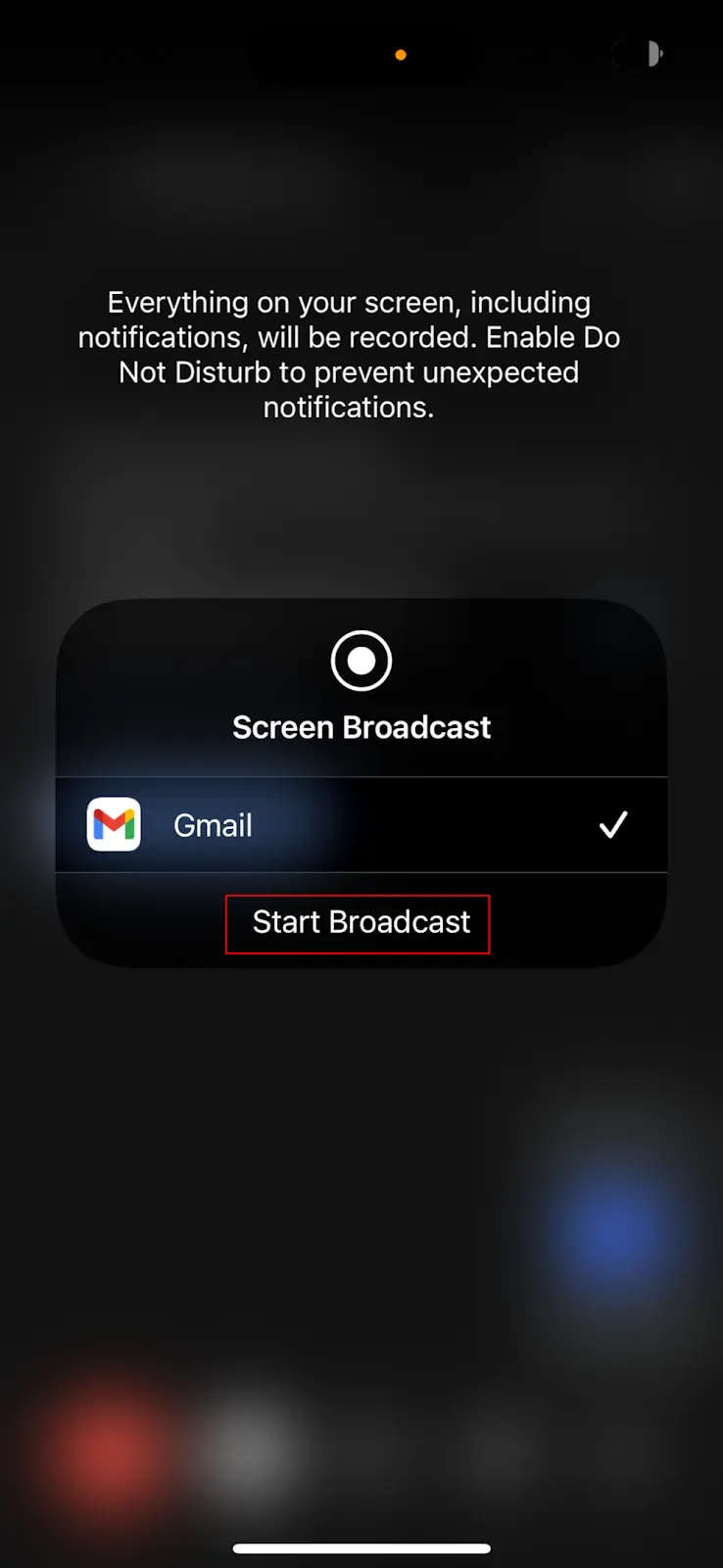
5. To conclude the screen sharing, tap "Stop Broadcast"
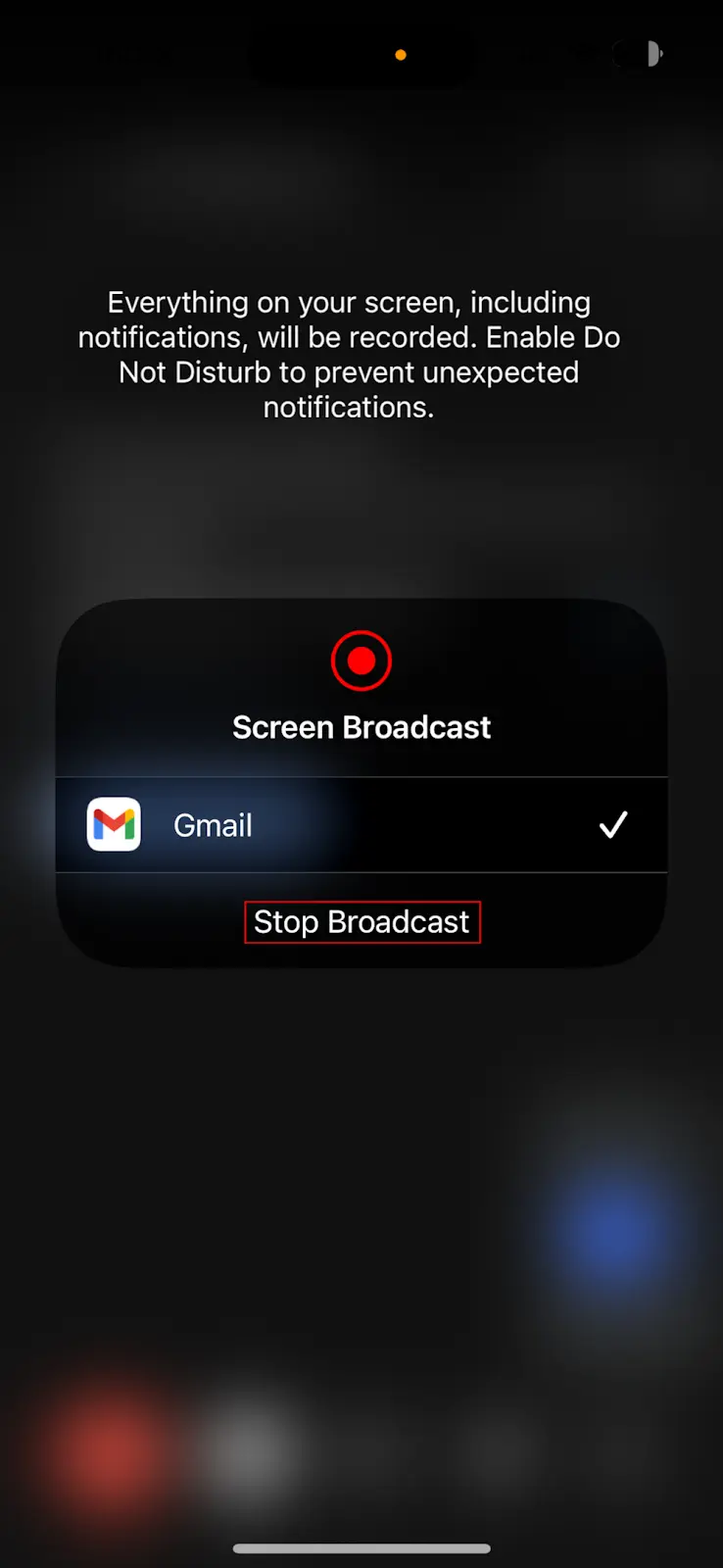
Pro tip: Users on newer iOS versions can enable the "Focus" feature to filter out their home screen, apps, as well as notifications.
Sharing/Presenting on Google Meet from Google Docs, Sheets, and Slides
For enthusiastic Google Workspace users, integrating your work into your meetings is now easier than ever. Most of us know that Google Workspace has become a game changer when it comes to streamlining your work, making it easily accessible from anywhere.
Google Docs, Slides, and Sheets, can integrate smoothly with Google Meet. Here's an easy guide on how to do this:
Step 1: Locate the Google Meet icon in the top right corner of your chosen Google Workspace, such as Docs.
Step 2: Upon clicking the icon, you'll be presented with two options: "Bring the call here" and "Just present this tab." Let's focus on "Bring the call here" for now
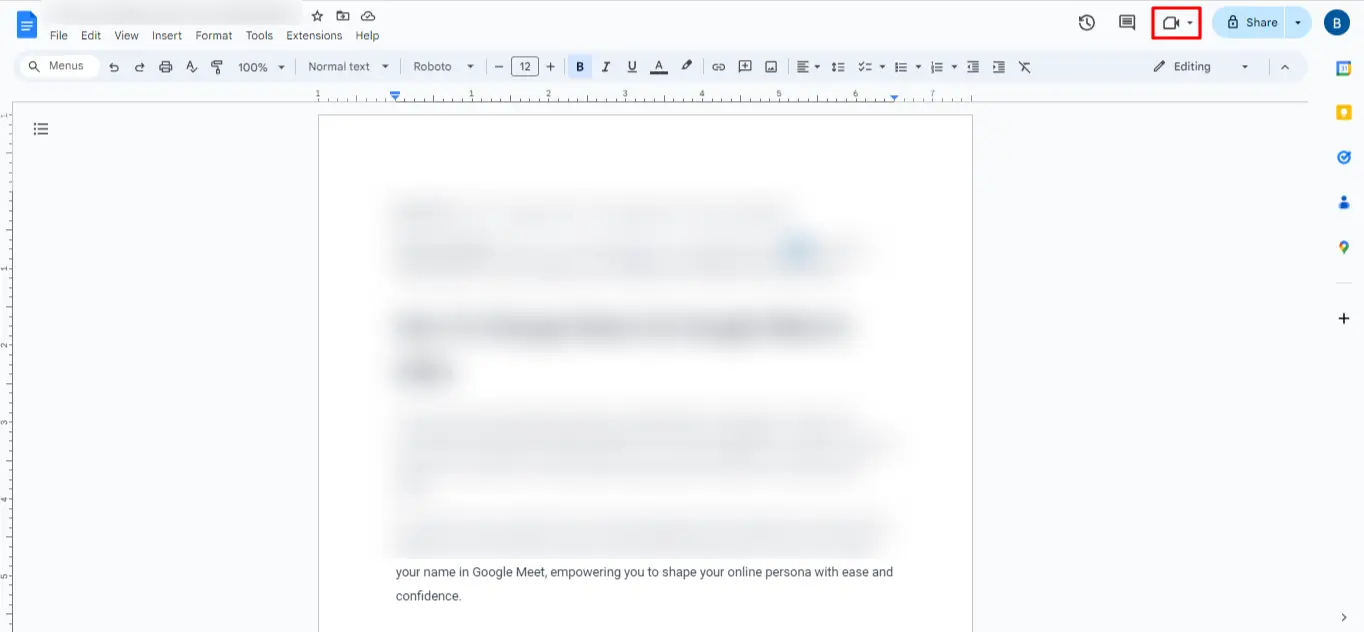
Step 3: By selecting "Bring the call here," your entire session will transition into the documents interface. You can view participants and access meeting controls directly within Google Workspace. From here, you have the option to broadcast either this specific tab or share the document's link.
Sharing the link will enable the participants to follow you in real time, even if the connection gets bad.
Step 4: To return to the regular meeting view window, simply click the "Pop-out" button located in the top right corner

With this option, you never have to worry about pixelated images or screenshots on your end, unless the network is unstable.
Can I Present If Someone Else Is Already Presenting?
If someone else starts presenting in Google Meet, you'll receive a notification informing you that your presentation is still visible. From this notification, you can click the buttons provided to either end or resume your presentation as needed.
To present when another participant is already sharing their screen:
- Click on "Present now" located in the bottom-right corner.
- Choose between "Your entire screen" or "A window."
- Then, click on "Present."
What Is Preventing Screen Sharing On Google Meet?
Occasionally, you might face restrictions while trying to share your screen on Google Meet. Here are some common scenarios that often occur, and how to resolve them:
- If the "Present Now" option appears greyed out, it means that the host has disabled screen sharing for all participants. Ask the host to enable screen sharing for the participants.
- On Mac devices, the browser may require permission to share your screen. Navigate to System Preferences > Security & Privacy > Screen Recording. Make sure to check mark the browser you are using from the list on the right.
- If another participant begins presenting while you are already sharing your screen, their content will become visible to attendees. To resolve this, click on "Resume Presenting".
Pro tip: You might want to record your Google Meet during this time because you'll be too busy focusing one someone else's presentation as well as your own.
Conclusion
While Google Meet provides a platform for delivering presentations, it often falls short in capturing the intricacies of live interactions. Bluedot, however, steps in to fill this gap, transforming your presentations into truly impactful experiences.
Bluedot transcribes your video presentation, generates clear summaries, and even creates personalized meeting notes tailored to your needs, it's the best google meet recorder extension. It even saves your recordings automatically so you can easily find them. This translates to saved time, effortless review of key points, and a deeper understanding for everyone involved.
Plus, its automatic speech-to-text transcriptions ensure inclusivity for participants with hearing impairments or language barriers. You can share clear summaries with ease, discuss points further using connected tools, and even make presentations accessible with automatic captions. Bluedot doesn't just record your meeting and presentations, it amplifies them.
Why not give it a try? Install Free Extension
FAQ
Can I directly join a meeting in Google Meet by presenting my screen?
There are many different ways you can join a Google Meet. However, you can also join directly by presenting your screen. Here's how:
1. Tap on the scheduled Google Meet link you'll be joining
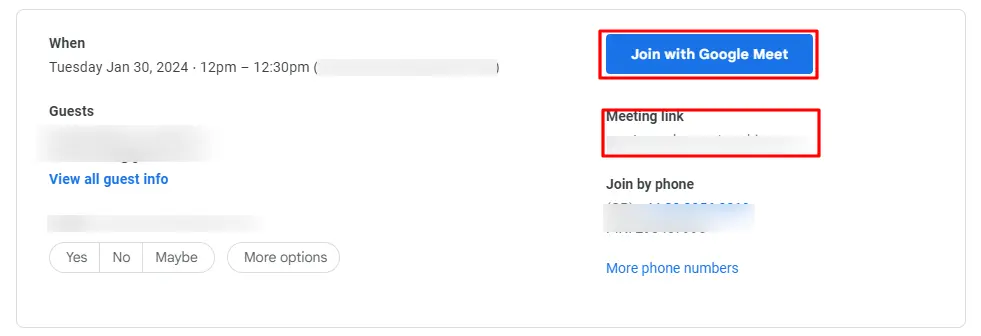
2. Click "Present" and choose the window or tab you want to share

3. Select "Share" to enter the meeting, presenting your screen exclusively.
What can you present on your screen in Google Meet?
Google Meet is incredibly versatile—you can use it to share updates with your team through a presentation or brainstorm together on a document. With screen sharing, the possibilities are endless, making collaboration a breeze and boosting productivity effortlessly.
Is it possible to view myself while presenting in Google Meet?
Unfortunately, Google Meet doesn't offer a built-in feature to view yourself while presenting.
However, you can use alternative methods such as splitting your browser window, using a second device or sharing only a specific tab or window to achieve a similar result.





